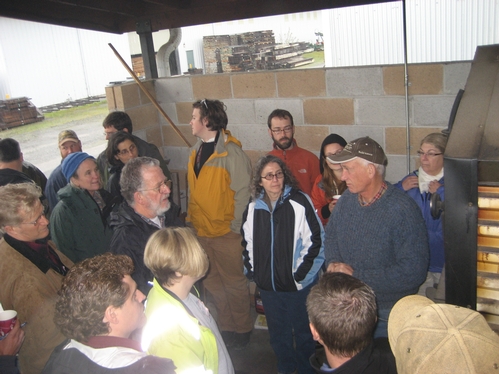Sixty five people attended our Woody Biomass to Energy Workshop that was held in Eureka last Thursday. We have posted the presentations here.
The aim of the workshop was to help attendees to understand the basics of different conversion technologies including scale, cost, raw material specification and whether they are proven or emerging technologies. We started by looking at some of the basics regarding biomass feedstock sources, the potential use of this material as an energy source, competing uses for the material and an introduction to conversion pathways. It can make sense to convert biomass to energy but there are many other uses out there that may add more value.Next we looked at proven technologies including heat applications, electricity and cogeneration (or combined heat and power). The use of woody biomass for heat is a proven technology at scales ranging from a single stove to systems providing heat to larger buildings. These “institutional” systems can make financial sense if oil, propane or electricity is replaced by biomass as a fuel (generally chip or pellets). The technology used is well proven in Europe and elsewhere in the States. It is an extremely efficient way to capture the energy in wood – some systems are 90% efficient. Generally systems may make sense in buildings that have a floor area over 10,000ft2 that use a reasonable amount of heat. It is relatively easy to identify simple payback period if you assume the replacement of an existing heat system.

Eric Almquist of Almquist Lumber discusses his cordwood boiler
Electricity generation is also a proven technology and California has approximately 30 existing biomass power plants. Typical power plants are around 20 MW in size and consume up to 200,000 bone dry tons of fuel per year. Smaller scale (down to 5 MW) facilities generally cost more per kW to build and operate. The use of biomass in a stand alone power plant is about 25% efficient because much of the heat energy is wasted in the process. If the heat is captured and used (for example to heat dry kilns) the efficiency increases to around 70%.

Glen Zane of Blue Lake Power explains electrical generation
We then investigated emerging technologies including gasification, pyrolysis and the production of liquid fuels. Both gasification and pyrolysis have been around for decades (and longer) but for the most part they are still emerging technologies due to costs, reliability and lack of markets for the products produced. Gasification of biomass has the potential to produce electricity on a small scale and there are a number of demonstration projects in California. Currently the cost of producing this electricity is expensive and would only be applicable to off-grid areas. Various forms of pyrolysis are used to produce solids (char), liquid (bio-oil) and gas. Pyrolysis can be an energy intensive process and may have future potential to produce chemical feedstocks from wood.

Greg Chapman of the Schatz Lab discusses their Ankur gasifier
The final presentation on technologies identified the three biomass to liquid fuels pathways. It then focused on starch conversion, cellulosic conversion, traditional biodiesel and synthetic diesel production. Most technologies are still emerging and the costs are challenging at present.
We wrapped up the morning session with an update on the Biomass Crop Assistance Program (BCAP) which is currently on hold. A comment period on the proposed new rule for the program is open until April 9 2010. We also discussed some of the unintended consequences that the program has created since it began in August 2009.
In summary heat and electricity production are proven technologies that can make sense. If you are looking for a relatively small community-scaled operation then heat can be cheaper than fossil fuel alternatives. Electricity generally makes economic sense at a larger scale. All of the emerging technologies will develop further and are likely to play some part in future energy product production. However, we warned that if a story about a technology sounds too good to be true then it generally is. For anyone interested in woody biomass to energy projects undertaking due diligence and asking the right questions is vital.
After lunch at the Samoa Cookhouse we embarked on a very wet field tour to three locations to look at a simple heat installation, a power plant and a demonstration gasifier.

Lunch at the Samoa Cookhouse